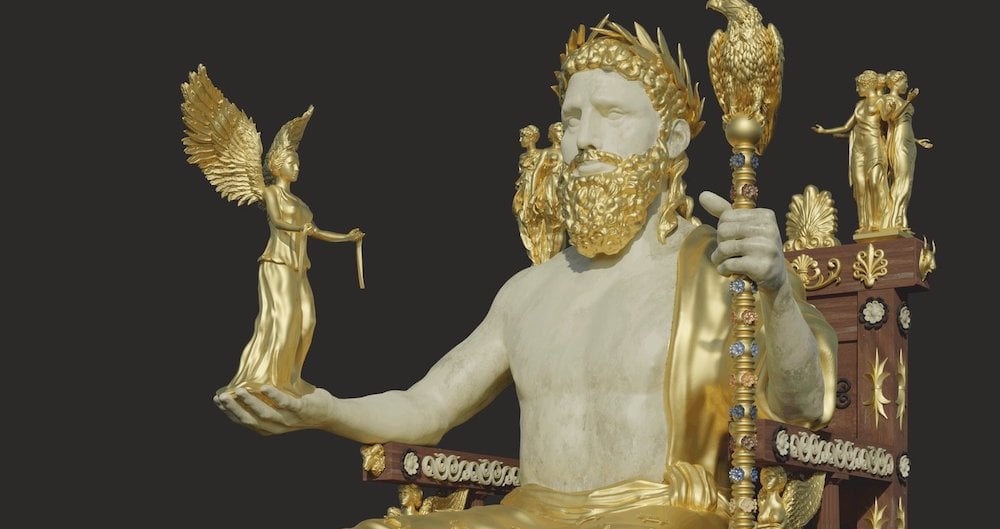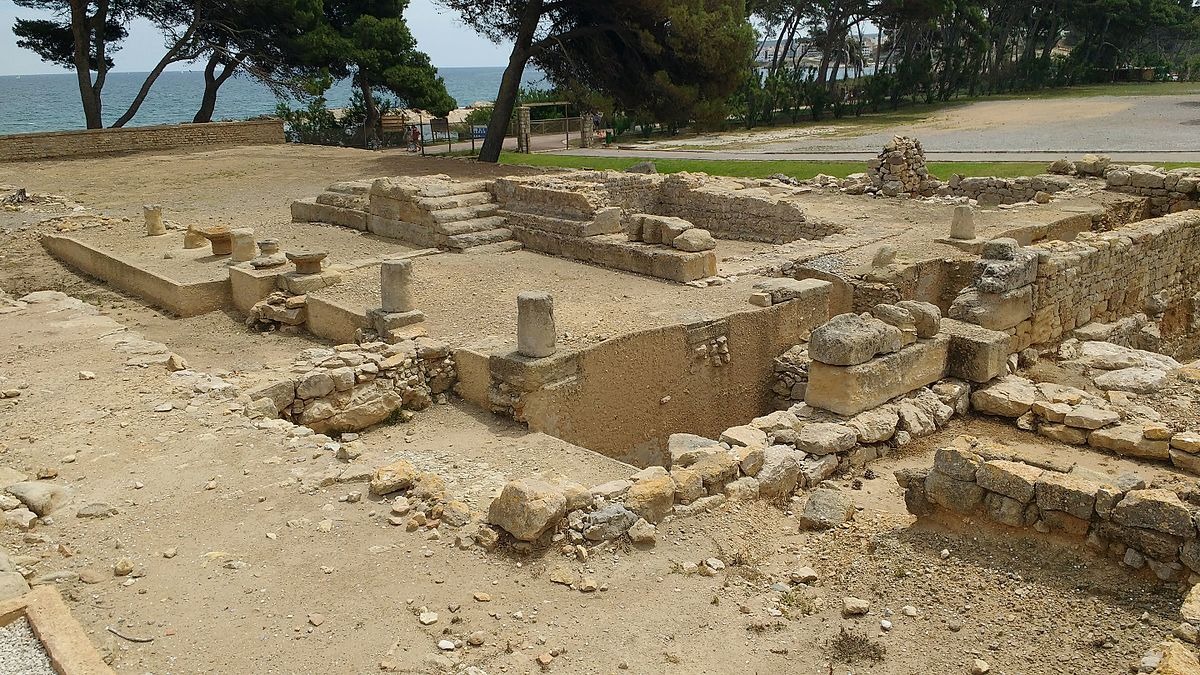
As the ancient Greeks encountered other civilizations and cultures through trade, conquest, and colonization, they often merged their own gods with foreign deities in a process of religious syncretism.
Ancient Greek religious syncretism was characterized by the blending and assimilation of various deities from different cultures and regions. The Greeks would often recognize a foreign deity as the equivalent of one of their own and combine the religious practices and beliefs of both faiths together.
Syncretism allowed for a more interconnected religious landscape throughout the ancient Mediterranean world and was practiced by various other civilizations like the Romans, Phoenicians, Egyptians, etc. Since most ancient civilizations were polytheistic, there tended to be fewer barriers preventing the mixture of religious beliefs and worship of new gods.

Ancient Greek religious syncretism
As Greek city-states engaged in trade, diplomacy, and conquest, they came into contact with neighboring civilizations, such as the Egyptians, Phoenicians, and Persians. This interaction led to the identification and integration of foreign gods with the Greek pantheon and vice versa.
Notable examples include the syncretism of Zeus with the Egyptian Amun, resulting in the god Zeus Ammon, and the fusion of the Greek hero Heracles with the Phoenician god Melqart. Such syncretic religious practices facilitated cultural exchange, fostering a more interconnected and cosmopolitan religious landscape in ancient Greece.
The Hellenistic era, following the conquests of Alexander the Great, further accelerated religious syncretism in Greece. As Greek culture spread throughout the vast Hellenistic kingdoms, it blended with local religious traditions, giving rise to hybrid deities and religious rituals. Egyptian gods like Isis and Serapis gained popularity in Greece, while Greek gods like Apollo were assimilated into local pantheons.

Beyond religious evolution, the practice of syncretism was politically astute. For example, the rulers of the Hellenistic successor states that emerged from Alexander the Great’s fragmented empire were able to bolster their legitimacy in the eyes of the native subject populations they ruled over by blending Greek gods with native deities.
The merging of so many religious elements across the ancient Mediterranean led to a colorful interplay of beliefs and practices. As the Belgian archaeologist and historian Franz Cumont wrote in his landmark book, Oriental Religions in Roman Paganism, there was a sense of “religious chaos” during antiquity until the reign of Constantine and the more uniform doctrines of monotheistic religion.

Zeus Ammon
Zeus Ammon, also known as Ammon-Zeus, was a syncretic deity in ancient Egypt during the Hellenistic period. This blended god combined attributes of the Greek god Zeus with the Egyptian deity Amun. The syncretism occurred due to the cultural interactions and influences between the Greek and Egyptian civilizations during the reign of Alexander the Great and his successors.
Amun was a significant god in the Egyptian pantheon, associated with kingship, creation, and the wind. His worship was centered in Thebes (modern-day Luxor), and he was often depicted with a ram’s head or wearing a crown with tall plumes. On the other hand, Zeus was the king of the Greek gods, associated with thunder, the sky, and sovereignty.
As Alexander the Great and his armies conquered Egypt, the blending of Greek and Egyptian religious traditions became more pronounced. The identification of Greek gods with Egyptian deities was one way to promote cultural and religious integration. By associating Amun with Zeus, the Greeks acknowledged the similarities between the two powerful gods and sought to bridge the gap between their respective religious beliefs.
The cult of Zeus Ammon gained popularity and spread to different regions during the Hellenistic and Roman periods. Temples were dedicated to Zeus Ammon, notably in the oasis of Siwa, where a famous Oracle of Ammon-Zeus was established. This Oracle became renowned, and people from various backgrounds sought its guidance.

Serapis
Serapis, also known as Sarapis, is a unique Graeco-Egyptian deity whose cult was established during the third century BC by Greek Pharaoh Ptolemy I Soter of the Ptolemaic Kingdom in Egypt. The creation of the Serapis cult aimed to foster unity between the Greeks and Egyptians within his realm. The Ptolemaic kings intentionally promoted the worship of Serapis as a matter of deliberate policy, leading to its growing popularity during the Roman Empire, even replacing Osiris as the consort of Isis in temples outside of Egypt.
Though Ptolemy I played a role in formalizing the cult of Serapis and endorsing him as a patron of the Ptolemaic dynasty and Alexandria, Serapis was a pre-existing syncretistic deity resulting from the blending of the Egyptian gods Osiris and Apis. Additionally, Serapis incorporated attributes from other deities, such as chthonic powers associated with the Greek Hades and Demeter, and benevolence linked to Dionysus. Serapis’ iconography and appearance combined Greek features with Egyptian elements, symbolizing abundance and resurrection.
To ensure wider acceptance among the Greeks, an anthropomorphic statue was chosen to represent Serapis, deviating from the traditional animal-headed figures common in Egyptian religion. This statue, named Userhapi (meaning “Osiris-Apis”), was considered to embody the full essence of Osiris rather than just his ka (life force), and it became the Greek Sarapis. The blended nature of Serapis’ cult exemplified the harmonious amalgamation of religious beliefs and practices between the Greek and Egyptian cultures during the Hellenistic and Roman periods.

Heracles Melqart
Heracles-Melqart is a syncretic deity that emerged during ancient times, blending elements of the Greek hero Heracles (Hercules) with the Phoenician god Melqart. This religious fusion occurred due to cultural interactions and trade between the Greek and Phoenician civilizations.
Heracles was a prominent figure in Greek mythology, renowned for his incredible strength and numerous heroic exploits. He was a symbol of heroism and valor. On the other hand, Melqart was the chief god of the Phoenician city of Tyre, associated with maritime power, protection, and fertility.
As the Greeks and Phoenicians engaged in commerce and diplomacy, their religious beliefs inevitably interacted, leading to the identification of Melqart with Heracles. This syncretism emphasized the common attributes of both gods, such as their protective and heroic characteristics
That being said, there is some debate as to how closely Heracles and Melqart – and indeed the Roman Hercules – were fused together. For example, the historian Megan Daniels comments that these connections were “not as a simple one-to-one equation of Heracles and Melqart” but rather there was a “long-term syncretism of these god-heroes as representative of the shared ideologies and cultural mentalities that emerged from human interactions and endeavors around the Mediterranean world in the first millennium BC.”

See all the latest news from Greece and the world at Greekreporter.com. Contact our newsroom to report an update or send your story, photos and videos. Follow GR on Google News and subscribe here to our daily email!



